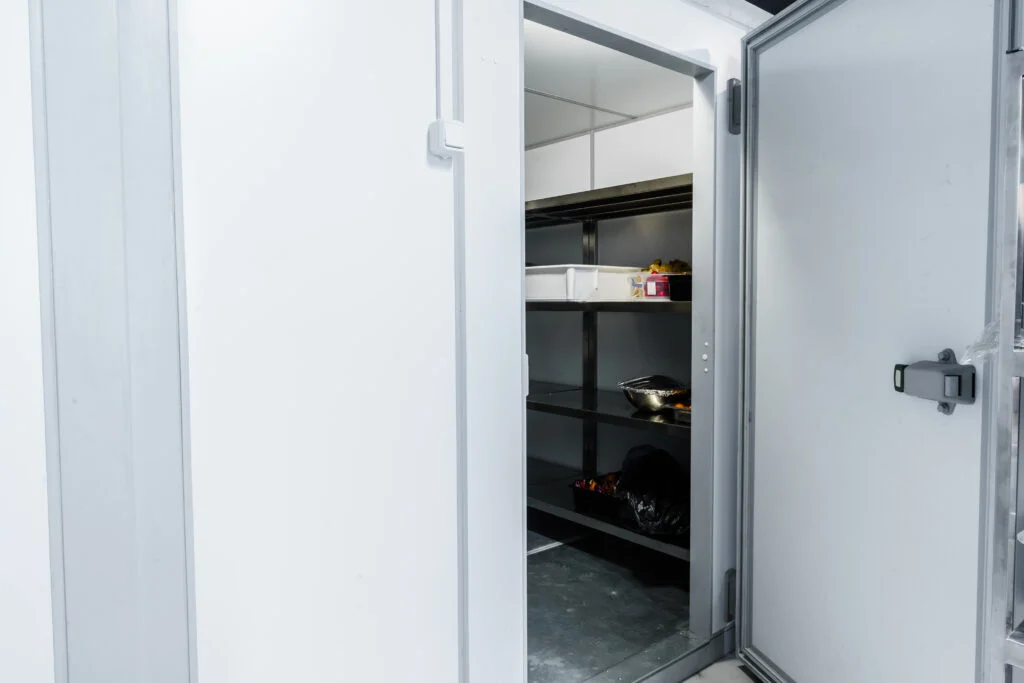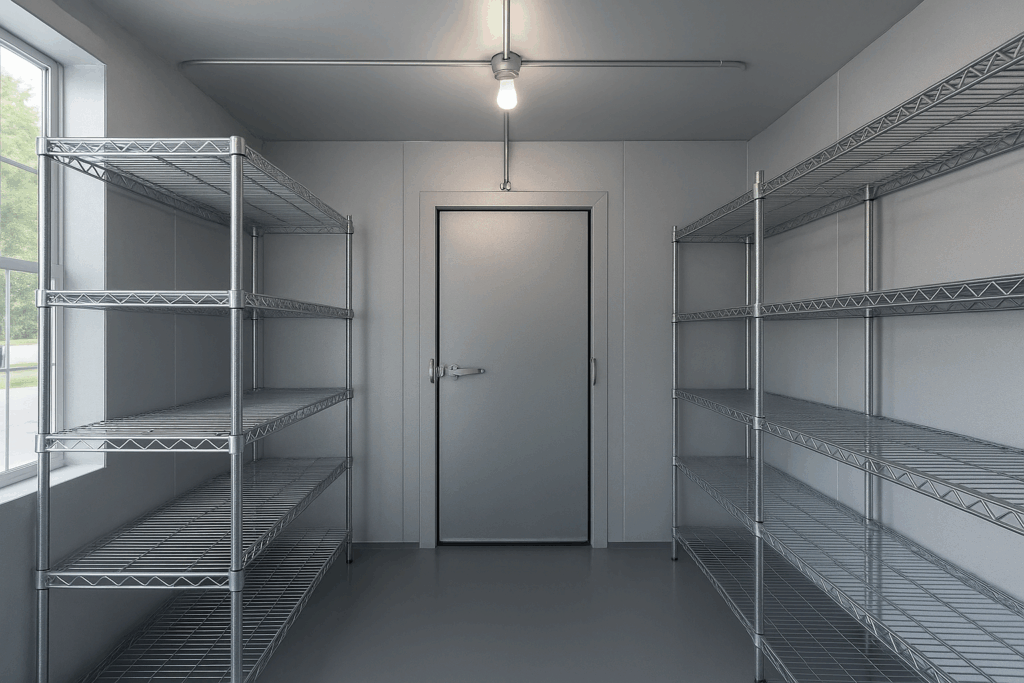For any business in the food service or hospitality industry, the walk-in freezer is a cornerstone of the operation. It is a vault that protects thousands, or even tens of thousands, of dollars’ worth of valuable inventory. When it is running correctly, it is an appliance that is easily taken for granted. But the moment it begins to fail, it can trigger an immediate and significant crisis. A walk-in freezer that is not holding temperature is not just an inconvenience; it is a direct threat to your product, your food safety standards, and your business’s bottom line.
When faced with a refrigeration emergency during business hours, the first instinct is often a feeling of panic. However, a calm and methodical approach can make a world of difference. While most serious refrigeration failures require the diagnostic tools and expertise of a certified professional, there are several common problems with relatively simple solutions that a business owner or manager can safely check first. Running through a few basic troubleshooting steps can sometimes resolve the issue quickly, prevent unnecessary product loss, and, at the very least, provide crucial information for a responding technician.
Tip #1: Check for Airflow Obstructions and Issues
The single most common cause of a walk-in freezer failing to maintain its temperature is a problem with airflow. Your refrigeration system works by absorbing heat from inside the box and releasing it outside. This process is entirely dependent on a constant and unobstructed flow of air over two key components: the evaporator coil and the condenser coil.

The evaporator coil and its fans are located inside the freezer box itself. This is the unit that gets cold and blows the frigid air throughout the space. It is essential that this unit can “breathe.” A very common problem occurs when inventory, such as boxes of frozen goods, is stacked too high or too close to the evaporator unit, blocking the return and supply air. This prevents the cold air from circulating properly throughout the box and can also cause the coil to ice up, making the problem even worse. Ensure that there are always several inches of clear space on all sides of the evaporator unit to allow for proper air circulation.
The condenser coil and its fans are located outside the freezer box, often on the roof of your building or in a back room. The condenser’s job is to release all the heat that was collected from inside the freezer. Over time, this unit can become clogged with dust, grease, leaves, and other airborne debris. When the condenser coil is dirty, it cannot release heat effectively, which causes the entire system to overheat and shut down on a safety switch. While a professional cleaning is required to properly service a dirty condenser, a quick visual inspection can tell you if this might be the source of your problem. A heavy buildup of ice on the indoor evaporator coil is another major red flag that points to an airflow problem or a failed defrost cycle, which always requires professional service.
Having issues with your walk-in freezer? Schedule a repair today.
Tip #2: Verify Power and Basic Settings
Before assuming a major mechanical failure, it is essential to perform a few simple checks to ensure the unit is receiving power and is being told to run correctly. These may sound obvious, but they are surprisingly common sources of a “broken” freezer.

Your first stop should be your building’s main electrical panel. A walk-in freezer is a high-power piece of equipment that is on its own large, dedicated circuit breaker. Locate the breaker that is labeled for your walk-in unit and see if it has been tripped. A tripped breaker will be in the middle position or the fully “off” position. You can try to reset it by pushing the switch firmly to the “off” position and then back to the “on” position. It is critical that you only do this one time. If the breaker trips again immediately, do not touch it further. A breaker that will not reset is signaling a serious electrical fault within the refrigeration system that needs to be diagnosed by a professional.
If the breaker is on, the next step is to check the unit’s thermostat. The thermostat is typically located on the exterior of the walk-in box. Verify that it has power and that its display is lit. Check the temperature setpoint to ensure it has not been accidentally changed. The standard, food-safe temperature for a walk-in freezer is 0 degrees Fahrenheit or slightly below. You should also look for any main power switches, which are often located near the door of the walk-in or in a disconnect box near the outdoor condensing unit, to make sure they have not been accidentally switched off.
Tip #3: Inspect the Door and Gaskets
Your walk-in freezer is essentially a large, insulated box, and its ability to maintain its frigid temperature is entirely dependent on its ability to keep the warm, humid outside air from getting in. The single biggest and most common point of failure in this regard is the door.
The primary line of defense is the rubber or vinyl gasket that runs around the entire perimeter of the door. Over time, this gasket can become brittle, compressed, torn, or can begin to pull away from the door frame. Even a small gap in this seal can allow a continuous flow of warm, moist air to infiltrate your freezer. This forces your refrigeration system to run almost constantly to try and combat the incoming heat, which wastes a huge amount of energy and puts a major strain on your equipment. This constant influx of moisture will also lead to excessive frost and ice buildup inside the unit.

You can perform a simple but effective test to check the integrity of your door seal. Take a dollar bill and close it in the door. Once the door is fully shut, try to pull the dollar bill out. If you feel a significant amount of resistance or tension, the seal in that spot is good. If the bill slides out easily with little to no resistance, you have found a leak. You should perform this test in several spots all around the perimeter of the door.
It is also important to check the door’s hardware. The door should have a functioning self-closer that pulls the door tightly shut in its final few inches of travel. The hinges should be in good condition, without any sagging that would prevent the door from aligning correctly with the frame. A door that does not close and seal automatically every single time is a major source of temperature problems.
When to Stop and Call for Professional Emergency Service
These basic troubleshooting tips are designed to help you identify and resolve simple, external issues that can affect your walk-in freezer’s performance. However, it is crucial to recognize that a commercial refrigeration system is a complex and high-voltage piece of machinery. Any problem that involves the internal components of the sealed refrigeration system or its electrical controls must be handled by a licensed and certified professional.
You should stop any further troubleshooting and call for professional emergency service immediately if you have encountered any of the following red flags: the circuit breaker trips repeatedly and will not reset, the unit is making any loud or unusual mechanical noises such as grinding, squealing, or banging, there is a large, solid block of ice on the evaporator coil that does not go away, the compressor is running but the fans are not spinning, or the unit will not turn on at all and you have already verified all of the power sources.
Attempting to diagnose or repair these more serious issues without the proper training and tools can be dangerous and can often lead to more extensive and expensive damage to the equipment. A fast call to a professional is the smartest and safest way to protect your inventory and your investment.
Want to avoid future repairs? Schedule your maintenance today.
A refrigeration failure during business hours is a significant threat to your operation, but it is a manageable crisis. By staying calm, performing a few simple checks for airflow and power issues, and inspecting the integrity of the door seal, you can quickly rule out the most common and simple problems.
For any issue that goes beyond these basic steps, or for any of the serious warning signs that point to a major mechanical or electrical failure, a prompt call for professional help is essential. We encourage the business owners of Lebanon and the surrounding Southwest Virginia area to be prepared. Keep the number of a trusted commercial refrigeration specialist on hand. The expert team at SWVA Mechanical is proud to offer fast, reliable, 24/7 emergency service to our commercial partners. We are here to help you protect your inventory, minimize your downtime, and get your business back to running smoothly.
